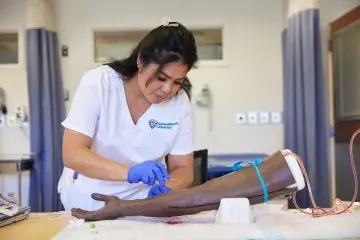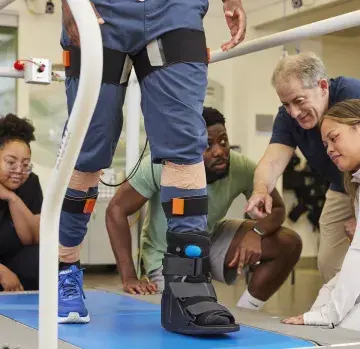Towards a Broader Definition of Disease Risk
Student Voices is a blog series written by SMU students. If you have an idea for a story, reach out to ssolo@samuelmerritt.edu. This article is written by ELMSN-FNP student Sarah Koster.
I came to SMU after working in public health for about 10 years, and I am now halfway through my training to be a family nurse practitioner. Addressing the root causes of disease is what drew me to the fields of public health and clinical care. The more I learn, the more convinced I am that we are using the wrong approach when we try to quantify disease risk to guide our interventions.
Take, for example, one of the most common information-gathering methods used by clinicians: the patient intake form. These forms capture data to help quantify disease risk, such as age, sex, gender, and race — individual characteristics that have been linked to higher rates of certain diseases.
For instance, it’s been shown that African American mothers have higher rates of preterm deliveries than white women, even when they have access to excellent prenatal care and nutrition. This statistic, when seen alone through a sex-and-race checkbox, implies that African American women have some inherent biologic characteristic or gene that increases their risk for premature birth. In fact, research indicates that the increased risk is likely a complex interaction between social and environmental factors faced by African American women, such as institutionalized racism, fear and stress regarding safety, and historical trauma.
If we really want to understand a patient’s risk factors for certain health conditions, we can’t continue to rely just on intake forms and medical histories that focus on individual characteristics. We need to work to understand how systems affect their lives; we need to understand the social determinants of health.
The World Health Organization acknowledges that a person’s experiences with such cultural factors as social capital and social cohesion are just as important as lifestyle choices in defining an individual’s health risks.[1] These issues are influenced by distribution of power, wealth and resources across communities. So, if we are to better address the ways that structures and systems affect our patients’ health, we need to ask questions about their attitudes about representation in education and political office, access to higher-wage jobs, mental health and substance use treatment, interactions with law enforcement, and stress related to food and housing security.
Think about how transformative it would be to ask questions like the following:
- Have you or people in your community who share your identity/background been victim to unfair housing practices?
- Do you frequently worry about your ability to reliably access safe and healthy food?
- Do you feel optimistic about the opportunities you have available to you in the future?
Thinking back to the example of African American mothers, if we as clinicians better understood how systems marginalize certain pregnant women, we would be better able to create interventions around that. Imagine if we approached risk for preterm delivery from that perspective and created support groups designed to create social capital in communities. Imagine what could happen if both clinicians and their patients stopped viewing skin color alone as a cause of illness, and instead realized that it is the inherently racist systems people live under that make them unhealthy.
Without understanding the environmental, social, and institutional impacts, clinicians will miss opportunities for healthy interventions for individual patients and our broader communities.
[1] Solar O, Irwin A. A conceptual framework for action on the social determinants of health. Social Determinants of Health Discussion Paper 2 (Policy and Practice).


